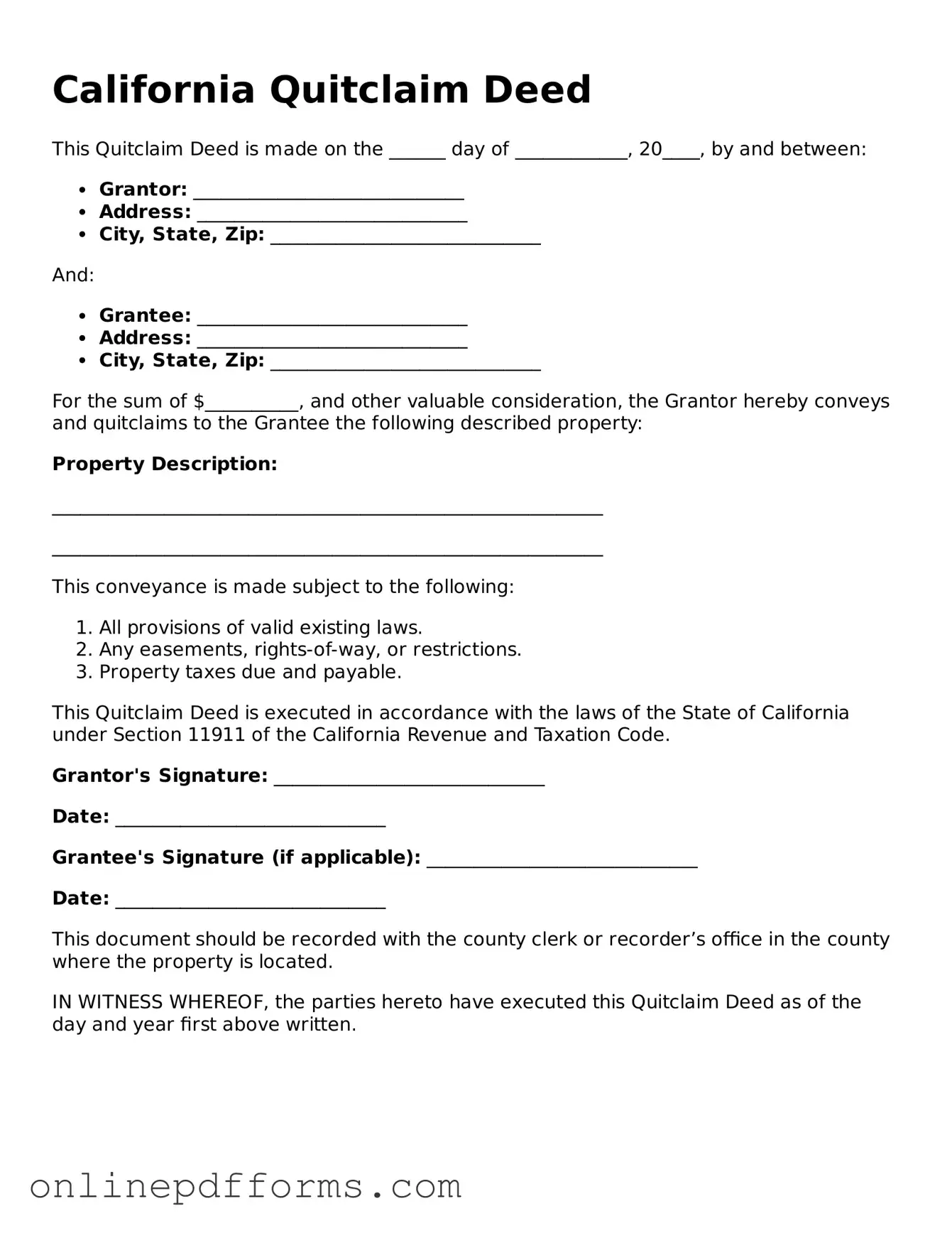The California Quitclaim Deed is often compared to the Grant Deed. Both documents are used to transfer ownership of real property, but they differ in the level of protection they offer. A Grant Deed guarantees that the seller has not only the right to sell the property but also that the property is free from any undisclosed encumbrances. In contrast, a Quitclaim Deed does not provide such assurances. It merely transfers whatever interest the seller has in the property, if any, without any warranties.
Another document similar to the Quitclaim Deed is the Warranty Deed. Like the Grant Deed, a Warranty Deed offers a higher level of protection to the buyer. It assures the buyer that the seller holds clear title to the property and that they will defend against any claims to the contrary. This makes Warranty Deeds more favorable in most transactions, especially when substantial investments are involved. The Quitclaim Deed, lacking such guarantees, is typically used in less formal situations, such as transferring property between family members.
The Bargain and Sale Deed also shares similarities with the Quitclaim Deed. It conveys property ownership but does not guarantee that the title is free from encumbrances. However, unlike the Quitclaim Deed, a Bargain and Sale Deed implies that the seller has some interest in the property and that they are conveying that interest to the buyer. This document is often used in foreclosure sales or tax lien sales, where the seller may not have complete knowledge of the property's title status.
A Deed of Trust is another document that can be likened to a Quitclaim Deed, though it serves a different purpose. A Deed of Trust is used in real estate transactions to secure a loan. It involves three parties: the borrower, the lender, and a trustee. While a Quitclaim Deed transfers ownership, a Deed of Trust provides a security interest in the property. If the borrower defaults, the lender can initiate foreclosure proceedings. This document is crucial in the lending process, ensuring that the lender has a claim to the property until the loan is paid off.
The Special Purpose Deed, such as a Personal Representative Deed, is another document that can resemble a Quitclaim Deed. This type of deed is used when an executor or administrator of an estate transfers property on behalf of a deceased person. While it may not provide warranties like a Grant Deed, it serves the purpose of transferring ownership from the estate to the new owner. This is particularly relevant in probate situations, where property needs to be distributed according to a will or state law.
For those considering the purchase of a recreational vehicle, understanding the nuances of the transaction is vital. To ensure clarity and protection for both parties, utilizing an "official RV Bill of Sale" can document the transfer effectively. This form serves as a safeguard for buyers and sellers alike and can be accessed at this essential RV Bill of Sale resource.
Lastly, the Affidavit of Death can be seen as related to the Quitclaim Deed in specific contexts. While it does not transfer ownership by itself, it serves as a legal document that can accompany a Quitclaim Deed when a property owner passes away. This affidavit provides proof of death, which is often necessary for transferring property title to heirs. It ensures that the Quitclaim Deed can be executed smoothly, allowing heirs to claim their rights to the property without unnecessary delays.
